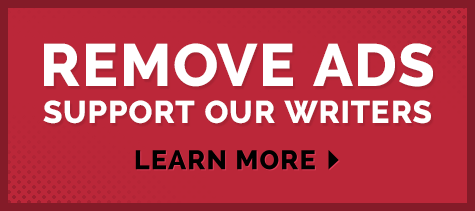Marc Narducci spent 37 years covering all sports for The Philadelphia Inquirer before retiring in July 2021. He covered everything from high school sports to the Phillies winning the World Series and the Eagles winning the Super Bowl. A lifelong southern New Jersey resident, he remains a freelance writer and broadcaster. Once again, Marc reached out to see if MLB Trade Rumors would be interested in publishing his Hall of Fame ballot. I am happy to do it and hope it can be an interesting topic of debate for our readers. Here’s Marc…
Each year when we turn in our ballot, we are asked if we wish to make our votes public 14 days after the results are announced. Naturally, if this story appears, you know the answer.
One thing that you won’t see here is criticizing another person’s ballot. There are so many different ways to tackle this assignment.
The other thing is that in most cases, I don’t like putting why I didn’t vote for somebody, unless they are players such as Manny Ramirez and Alex Rodriguez, who have failed tests for steroids.
The other person I am not voting for that needs to be mentioned is Carlos Beltran, who is worthy of induction with his performance, but was the mastermind of the 2017 Houston Astros sign-stealing scandal, which altered the perception of the World Series champions. His role was so huge that it cost him a managerial job.
Last year Beltran came the closest of those not elected by receiving 70.3% of the votes and he’ll likely get the 75% needed this year. He had a great career.
The argument against my stance on players such as Ramirez, Rodriguez and Beltran is that they were some of the best players and deserve a place in Cooperstown.
Again, I can respect that opinion, while not voting for those players.
One other thing – I won’t have a very big ballot but also won’t put why certain players other than the ones already mentioned aren’t on it. When doing that, it denigrates the great career that a player enjoyed. All these players on the ballot were great and there is no need to tear them down.
One other thing is that it’s the belief of this reporter that players should be judged by the position they play. The criteria for second basemen, is different than third basemen, etc.
That said, here is my ballot, which consists of just two players.
The holdovers
Nobody from the Phillies 2008 World Series champion team has made it to the Hall of Fame. Ryan Howard, Jimmy Rollins (now in his fifth year on the ballot) and Cole Hamels (now in his first season of eligibility) all had great careers.
Utley led that World Series team with a bWAR of 9.0.
He was a six-time all-star. The knock on him is that he didn’t produce enough, but at his peak, Utley was among the best players in baseball.
Utley, had a six-year stretch, where his bWAR average was 7.3. During those six years from 2005-2010, his slash line was .298/.388/.523 with an OPS+ of 133. He averaged 27.0 home runs, 95.3 RBI and 104.7 runs scored.
His career 64.6 career bWAR is 15th all-time among all second basemen. Among those 15 players, he had the fewest plate appearances (7,863) as injuries hampered him during the latter part of his career, although he still continued to produce, just not at the rate he did during the above-mentioned six-year period. He is 10th among all second basemen in wins above average (41.0).
His 259 career home runs rank seventh among all second baseman, six who have been elected to the Hall of Fame. There are just 11 Hall of Fame second baseman who produced a better OPS+ than Utley’s 117.
His career slash line was .275/.358/.465. That, along with his power numbers, are very good for second basemen. He was in the top 10 of MVP voting three times.
This is Utley’s third year on the ballot. He received 28.8% of the vote his first year and 39.8% last year. He still has a long way to go, but is moving in a positive direction.
Also in his third year on the ballot, Wright received just 8.1% of the vote a year ago. Injuries curtailed what had been an excellent career.
As a comparison, two years ago, Scott Rolen got my vote, and he was elected to the Hall of Fame. Wright was, in my opinion, certainly comparable to Rolen. Both earned seven All-Star appearances. Rolen was the better fielder, but Wright did win two Gold Gloves. Wright was a more consistent offensive player.
The reason Wright got this vote is that like Utley, he had a really strong peak. For Wright, that lasted nine years from 2005-2013. During that time his slash line was .302/.384/.505. He averaged 23.1 home runs and 92.9 RBI, 90.2 runs scored and 19.7 stolen bases. His OPS+ was 138.
After that 2013 season, which he played at the age of 30, Wright was never the same due to injury.
For his career, Wright hit .296/.376/491 with 242 home runs and 970 RBI with a 133 OPS+. He finished in the top 10 in MVP voting four times.
During his time, Wright was among the best players in baseball and while he faces an uphill battle for election, he will continue to get this vote.
This year’s players
Nobody got my vote from this year’s first-year eligible players. This year’s first-year eligible players were Ryan Braun, Shin-Soo Choo, Edwin Encarnación, Gio González, Alex Gordon, Cole Hamels, Matt Kemp, Howie Kendrick, Nick Markakis, Daniel Murphy, Hunter Pence and Rick Porcello.
Again, all were great players just to get on the ballot, but not enough to receive this vote.
And finally
The first-time players on next year’s ballot are: Jake Arrieta, Jay Bruce, Asdrubal Cabrera, Starlin Castro, Wade Davis, Dexter Fowler, Todd Frazier, Brett Gardner, J.A. Happ, Scott Kazmir, Jon Lester, Andrew Miller, Mitch Moreland, Buster Posey, Ervin Santana, Kyle Seager, Joakim Soria, Ryan Zimmerman, Jordan Zimmermann.


